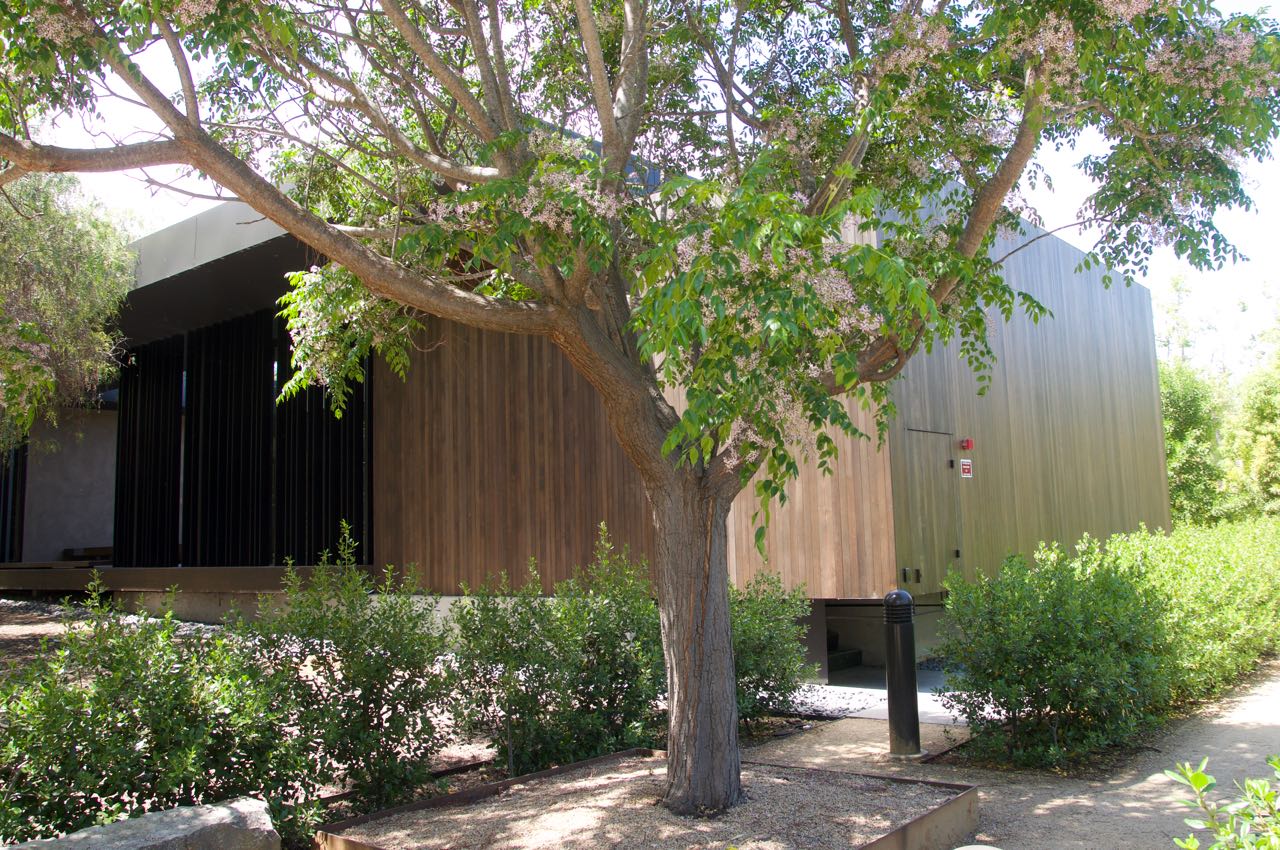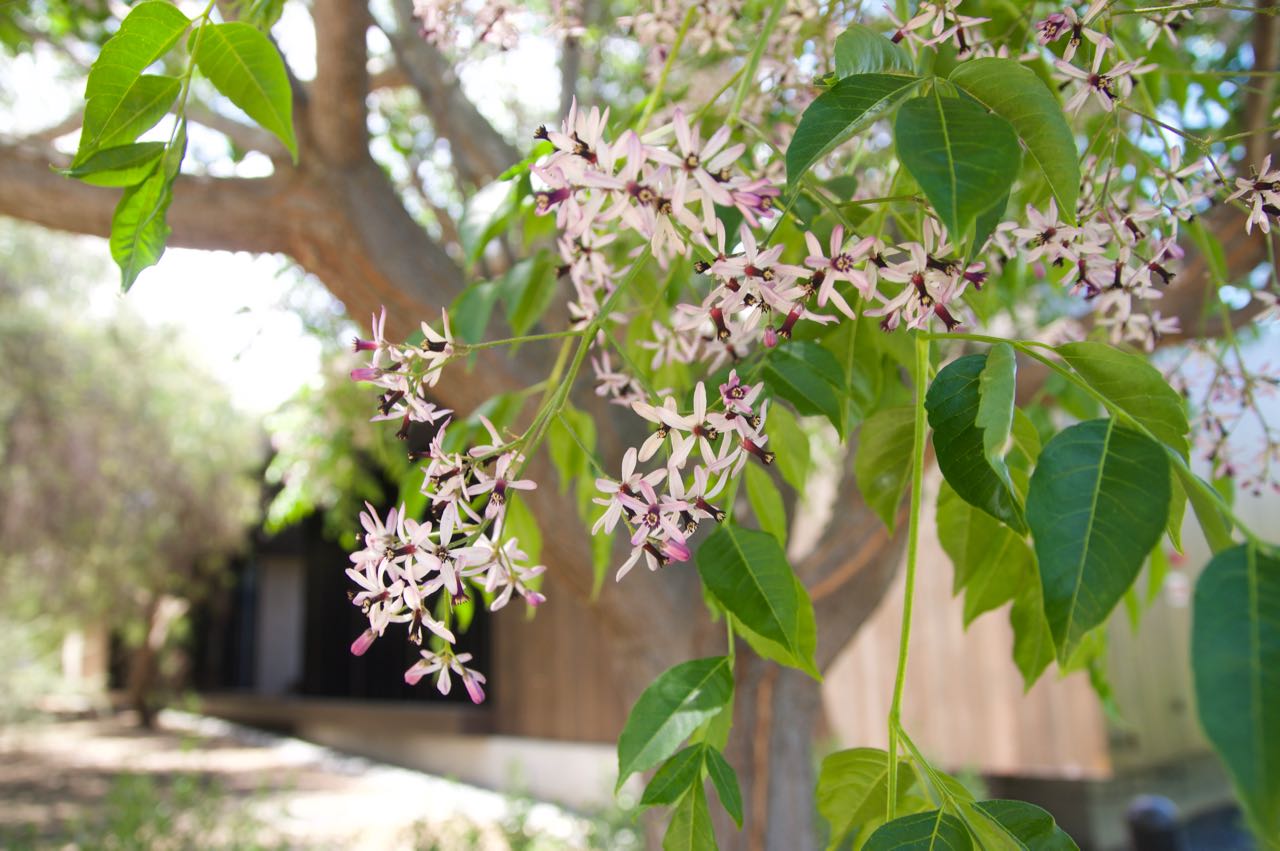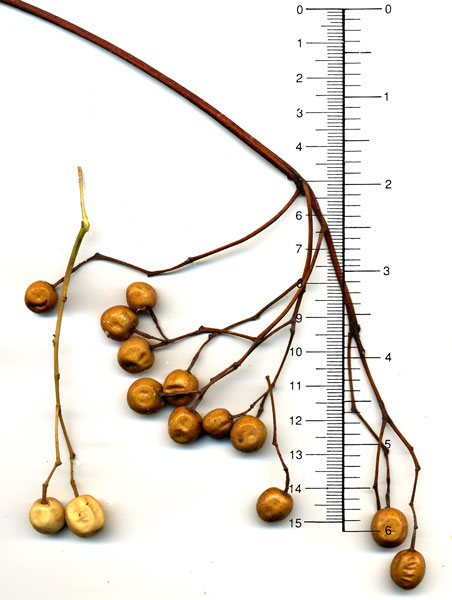Melia azedarach
 chinaberry
chinaberry
This deciduous tree is very pretty when covered in lilac blossoms in May and is also fragrant. The bipinnate leaves are well over a foot long but the general effect is delicate because the pointed leaflets, which are slightly toothed, are relatively small, not much over an inch long. The chinaberry has probably the largest leaves of any trees on campus (excepting palms and tree ferns); leaves can be 24 inches long with 59 leaflets.
The cherry-sized berries, yellow when ripe, contain a white, bony, fluted nut that can be dried in the sun, attractively polished, and is used for rosaries in Asian temples, especially in Iran, Malaysia, and Sri Lanka. It is fun to plant one of these nuts and see what happens when it germinates.
Although the fragrant sprays of flowers are big, the flowers themselves are small, consisting of five or six lilac petals and a dark tube bearing 10 anthers.
Chinaberry grows in very dry conditions in Persia but is also a native of the coastal rain forest of New South Wales and Queensland, where, from the appearance of the durable timber, it is known as white cedar. It is successful when planted in areas of severe drought and has been introduced in the Mediterranean and throughout the Americas, growing wild in the Southern United States.
In English literature the tree shows up as bead tree, pride of India, and also Indian lilac, a name applied to the related neem tree as well, with which it is often confused. The confusion can be forgiven since Melia azadirachta is one of the synonyms for neem, Azadirachta indica. Also called margosa, neem is widely distributed in India, where it has assorted historical uses in medicine. Neem seed oil products are sold in the States as natural pesticides.
A specimen of chinaberry north of the Mausoleum, near the giant deodar cedar, is quite old. The trunk looks to have fallen over but is still rooted, with one vertical trunk-like branch. Six trees of Australian origin that Ron Bracewell planted in April 1976 on Stanford Avenue opposite Peter Coutts Road performed very well in heavy adobe without watering; four remain. A fine example, planted in 2006, stands at the northeast corner of Windhover; others planted at the same time on the east side of the New Guinea Garden, the Cummings Art building side of the Art Gallery, and the Grounds Nursery have not survived.
Illustrations: fruit, leaf, and leaflet.
Name derivation: Melia – Greek word melia (ash), referring to similarity of leaves to those of Fraxinus; azedarach – Persian word azaddhirakt (ash tree).
About this Entry: The main text of this entry is from the book Trees of Stanford and Environs, by Ronald Bracewell, published 2005. John Rawlings added the 2006 locations. Sairus Patel clarified neem is a different species, noted Mausoleum specimen’s collapsed state May 2019. Missing 2006 locations noted, Roble parking lot tree identified as at Windhover now; all locations verified Apr 2021 (SP). Neem uses edited; Stanford Avenue count updated (Jun 2023, SP).






